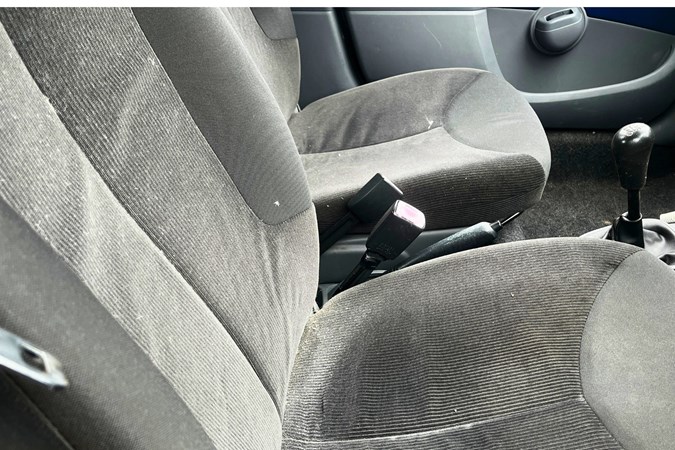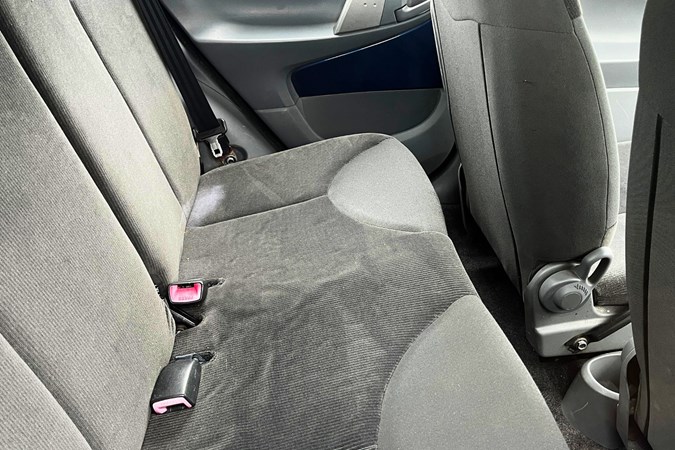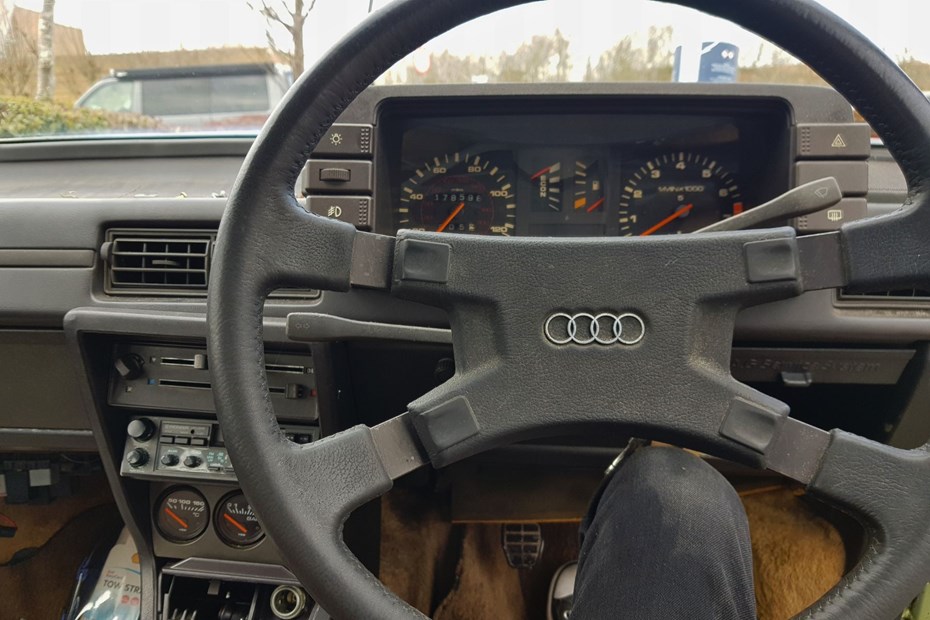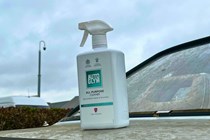Mould is pretty much a worst-case scenario for a car interior, short of a fire or flood that writes off the whole car. Since it’s a living fungus it can spread all over the carpets, seats and upholstery and many types are seriously dangerous to breathe in. If your car has mould, you’ll need to remove it as soon as possible using cleaning products.
Mould grows inside car interiors that are damp and warm. Water gets into cars from all sorts of places: the windows might be left open in rainy weather, you could spill something on the seats, there can be leaks around the lights or roof seals or the car is left in a damp environment such as a mossy carport for a long period of time.
If your car is a convertible, you might want to know how to remove mould from a car’s soft top. The steps below apply to exterior mould as well as cleaning mould from car seats, carpet, seatbelts and upholstery.
Usually if you are regularly using the car, the heater will dry out the interior effectively, so mould is usually seen on cars that haven’t been driven for a while. If you’re leaving a car for a long time, make sure the windows are up and the seals don’t let in water.
If it’s too late for that then you’ll need to remove mould from your car as soon as possible. Read on for our guide on how to do so safely and effectively.
Tools and products for cleaning mould

Before you start to clean mould from your car you’ll need to prepare the equipment. The most important will be a face mask and gloves, as mould can be really toxic and you don’t want to be ingesting it for any reason. Get some goggles too, as mould can get into your eyes as well.
You’ll also want a vacuum cleaner, some cloths and a couple of brushes. Then you can choose the products you’ll be using. There are off-the-shelf cleaners that promise to remove mould, including ones aimed at home or caravan use, that you can try. An all-purpose cleaner is always handy even if you choose one of the other methods below, since you can clean up any residual dirt once you’re finished with the mould.
For general cleaning, nothing offers more versatility. During our testing on a barnfind Audi, it was outclassed on the exterior by dedicated washes but seamlessly transferred to the car's interior. If you're tackling mould any time soon, a trusty bottle of this should come in more than handy.
Tested by Ryan Gilmore.
Pros
- Ideal for quick sprucing-up
- Internal and external cleaning from one product
- Perfect for beginners
Cons
- Lacks the punch of a dedicated cleaner
Eco-friendly car cleaning products are available too but the best materials for removing mould are actually quite simple. White vinegar diluted in a spray bottle is a great example – it’s one of the best ways to remove mould and is eco-friendly too. We’ll look at how to use it in the next section, along with salt and baking powder (bicarbonate of soda).
Guide to removing mould from your car
Start by moving the car to a well-ventilated area if it’s in a garage – push it out, don’t get in yet. Open all the doors and get your protective gear on, letting the car dry out as much as possible before you begin.
Vacuum the car’s interior first to remove any loose dirt, and remove floor mats – it’s easier to deal with these outside the car later. Now you can use whatever you’ve chosen to remove mould with.
Off-the shelf products will have instructions on the back, so follow those if applicable. If you’re using white vinegar, spray a diluted solution – use more vinegar if the mould is really bad – onto all the mouldy areas of the car. Scrub it slightly with a brush and let it rest for half an hour. It should dry out and leave a layer of dead mould, which you can vacuum up. Repeat as necessary.
It’s the same process with salt – add it to some water and spray on the mould, let it dry and then vacuum up. Baking soda should work without even needing water, as the powder can kill mould spores on its own. You can try a combination of the methods above and see what works best.
Once the mould is gone, use an all-purpose cleaner or interior cleaner to wipe the dashboard and steering wheel thoroughly. Clean the seats with a leather or fabric cleaner and make sure the glass is clean as well.
Prevent car mould from coming back

The final step is to stop the mould from returning. Check all the car seals especially around the doors, windscreens and the rear lights as these are the most common places for water to get in. Cars with sunroofs can leak from there too, and there are some models that can leak through from the engine bay area. Take the car to a mechanic if you’re not sure and they can check for you.
Keep the windows up in rainy weather, but also give the car a chance to dry out either by simply driving it regularly or opening it up in warm weather when you can.
What to do if you can’t clean car mould away
If you’ve put in the effort to clean mould from your car’s interior but the smell remains or you see it start to reappear regularly then you should probably take the car to a professional. Even if you can’t see or smell mould in the car, if you ever feel sick after driving it or have any health issues then a more thorough, professional clean may be required.
Mould could be hidden and since it’s dangerous to your health, don’t take any risks and have it properly removed. Professional car cleaners are often called ‘detailers’, and you should be able to find many local ones with a quick online search. Many will drive to your house and clean on your driveway, so it’s very convenient.

Frequently Asked Questions (FAQs)
-
What causes mould to grow in a car?
Damp, warm conditions usually caused by a water leak or flood damage that soaks into the soft materials in a car’s interior.
-
Is it safe to remove mould myself?
As long as you take steps to cover your mouth, nose and eyes, plus wear appropriate gloves, you can remove mould yourself at home.
-
What are the best products for removing mould from car interiors?
White vinegar is effective and cheap, but there are plenty of off-the-shelf products that sell themselves as mould removers. Baking powder works as well.
-
Can mould damage my car?
Yes, mould can cause permanent damage to your car interior - remove it as soon as possible.
-
How can I prevent mould from returning?
Keep the car dry by fixing any water leaks and closing all windows. If it gets wet inside, dry the car using the heater or by leaving it open on a warm day.
-
What should I do if the mould smell persists?
Check that all the mould is gone, including in areas you can’t see - move the seats and pull up the carpet if necessary. Take it to a professional cleaner if you can’t see any more but the smell remains.
-
Are there any natural remedies for mould removal?
White vinegar, baking soda and salt are all effective ways to remove mould that don’t involve chemicals.
-
How long does it take to remove mould from a car?
It depends on how much mould there is; a small patch won’t take more than half an hour but if the whole interior is mouldy it could take much longer.
-
Can professional services help with mould removal?
Yes, you can try a car detailer. Mobile services exist for home visits too.
-
How do I know if all the mould is gone?
You should be able to smell it if there is still mould after cleaning. If you feel sick after being in the car there could be mould in a place you didn’t check.
Sign up to the Parkers Newsletter to keep up to date with more of the latest reviews, news, and recommendations from the Parkers team.
Just so you know, while we may receive a commission or other compensation from the links on this page, we never allow this to influence product selections – read why you should trust us
Just so you know, we may receive a commission or other compensation from the links on this website - read why you should trust us.













